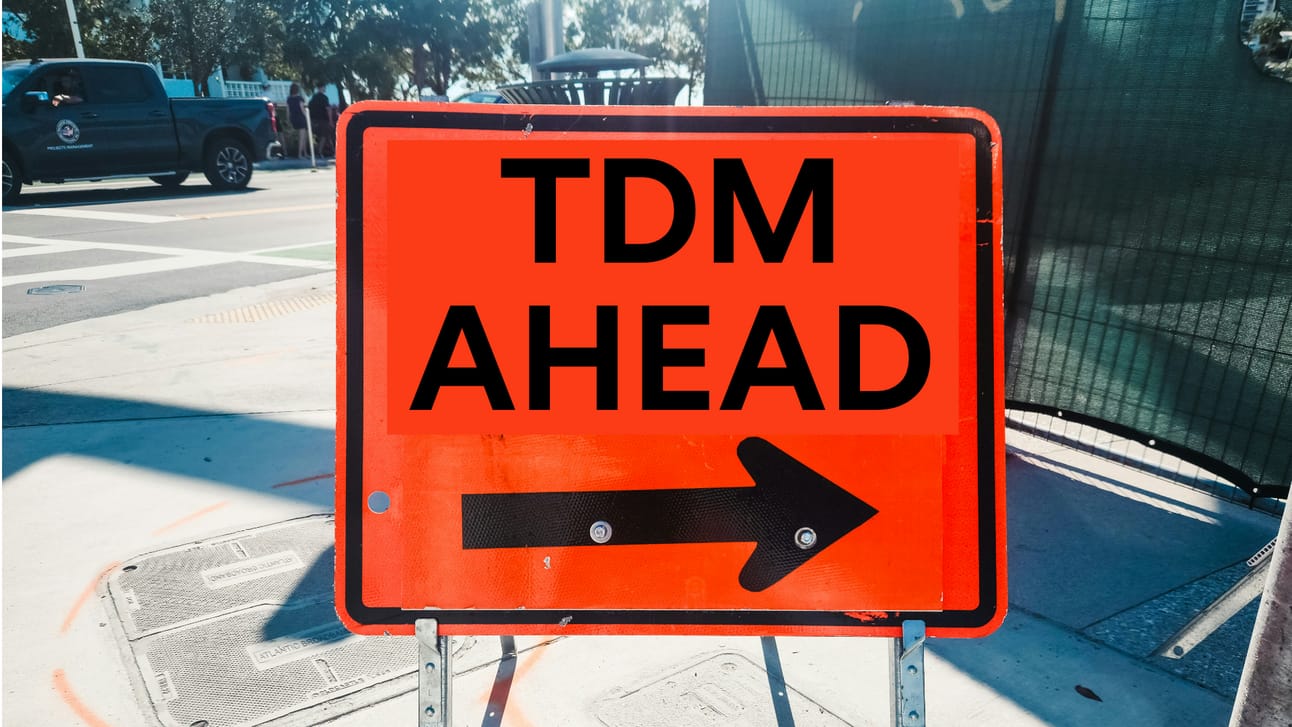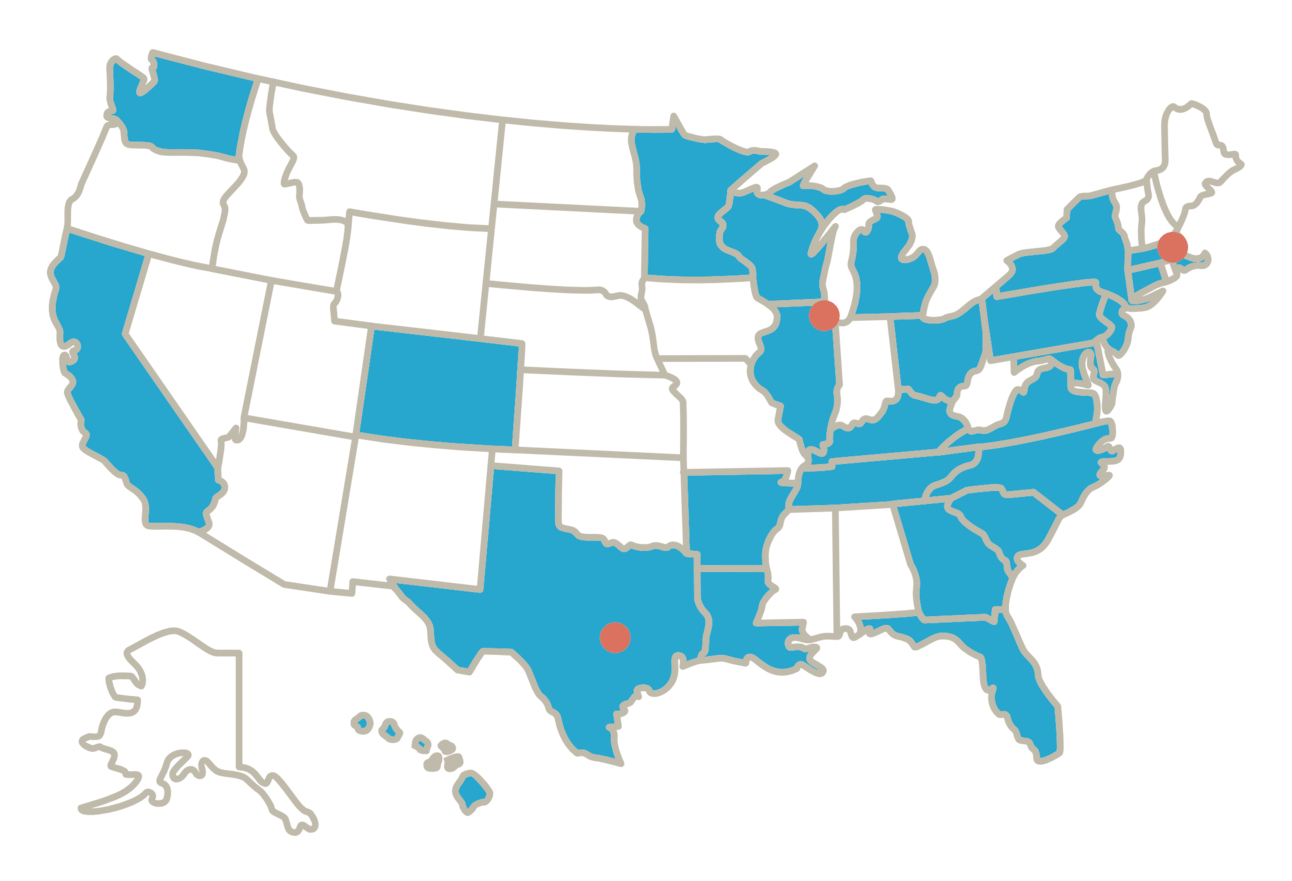Welcome to The Weekly Journey - your two-minute journey through the world of mobility and beyond. Use it to stay informed, find a new go-to source, or just have a peek inside how we think. Brought to you by the team at Journey.
A Journey insight. 💡

The Austin Construction Era Blueprint: All Engagement is Travel Demand Management
What do Boston’s The Big Dig, Seattle’s The Big Squeeze, and LA’s Carmaggedon have in common? Well, firstly, they showed that construction phases can become a little too famous. To differing outcomes, they showed us the power of the media in shaping both mobility outcomes and public works narratives. They also provide clues as to how – and how not to – implement Transportation Demand Management (TDM) incentives and messaging throughout the construction phase of a large public mobility project.
Mega construction projects and overlapping infrastructure timelines bring unique challenges. They are one of the ultimate “stress tests” of government coordination – requiring collaboration amongst cities, transit agencies, regional leaders, businesses, and residents. But construction also introduces numerous opportunities to put components back in an improved way. At Journey, we think TDM should be central to mitigating the effects of any large transportation project – especially when it can be woven into public communications processes.
Transit construction projects offer even more synergy with integrating TDM into engagement. The very outreach methods used to communicate about construction travel alternatives can build day one transit ridership ahead of ribbon-cutting: a win-win. In fact, we think consistent mode shift messaging woven into project engagement from planning to design to construction can help a project succeed years before it’s built.
Austin, TX is preparing for a “construction mega-event” with simultaneous projects – I-35 widening, light rail construction, and the convention center expansion – creating a “decade of disruption.” With transformative construction projects on the horizon, the city must rethink how it approaches mitigation—not as a series of temporary fixes, but as a strategic opportunity to improve mobility, business access, and public trust.
A Blueprint for TDM-centric Construction Mitigation
The successes and challenges of past megaprojects demonstrate the power of Transportation Demand Management (TDM) as a shock absorber for traffic mitigation during construction. Here’s the blueprint for leveraging TDM most effectively:
💬🚇Step 1: Infuse construction communications channels with clear multimodal travel information prioritizing transit, walking, biking, and other non-drive alone modes. Construction phases already require a great deal of communication. Those same channels can be used to offer up demand management messaging as well. People will be paying attention during construction – and attention is a rare commodity these days. Since the media landscape has changed significantly since Carmaggedon and The Big Squeeze, attention to construction messaging on new media will be important for Austin as well.
💪🔀Step 2: Implement proactive TDM strategies. Construction is a “naturally occurring” supply reduction event – calling for a demand management strategy to compensate. More importantly, construction forces a shift in travel behavior. This presents an opportunity to introduce people to new mobility options – options they might find work better for them even after construction is finished.
But to make this happen, cities and their partners need to introduce real, practical mobility solutions and provide strong incentives to use them. These solutions can range from physical (like bus service changes, bike share expansion and new park-and-rides) to programmatic (like transit pass discounts and carpool matching) to policy (like encouraging flexible work schedules). And these solutions need to be carefully planned, and ideally implemented, in advance of groundbreaking.
In Seattle, The Big Squeeze led to a new era of mobility and TDM investments, including current TDM programs that grew out of the construction mitigation phase. It was the right tool for the job. Initial fears of traffic chaos were mitigated by aggressive TDM strategies, including expanded transit service and employer commute programs. In Austin, key TDM measures may include targeted incentives for CapMetro’s high-frequency bus network, MetroRail, and micromobility options.
🚧🚍 Step 3: Leverage construction to pilot future mobility solutions. Instead of just managing detours, why not use this time to test better street design, dedicated bus lanes, or innovative curb management? Temporary solutions can become long-term wins. Mega construction periods involve putting many small details back in place – an eye toward putting them back better, reflecting people-first multimodal design is critical.
What if Austin treated this period not just as a challenge, but as an opportunity to rethink mobility, improve coordination, and create long-term benefits? Daunting as it may seem, construction can be a catalyst for positive change. If we invest in these solutions now, those benefits can last well beyond the construction timeline. Travel behaviors build over time and in the case of light rail construction, TDM-infused construction mitigation communications offer an opportunity to build high ridership in advance of light rail opening.
Disruption is inevitable, but dysfunction isn’t. If Austin gets this right, we won’t just survive the next decade—we’ll come out of it with a stronger, more connected city.
Reach out to the Journey team to discuss further!
A few interesting things. 🧠
New Transit Alert!: CapMetro in Austin just launched two new Rapid bus lines - a Project Connect investment designed to increase transit options east of I-35. Learn more here.
Dollar Vans: A podcast episode from Feet in 2 Worlds focused on dollar vans in New York City.
Service-Led Planning: Some insights on the California State Rail Plan from Seamless Bay Area.
Self-Driving AI: A deep-dive video interview re: self-driving cars, robotics, and AI with Vincent Vanhoucke, Distinguished Engineer at Waymo.
A quick Journey update. 👷♀️
NCDOT SPSF: Journey is now certified as a Small Professional Services Firm (SPSF) by the North Carolina Department of Transportation. Reach out if you would like to collaborate on work in North Carolina!

Journey Offices and DBE Status
Did someone forward you this newsletter? Be sure to subscribe to get The Weekly Journey in your inbox.
